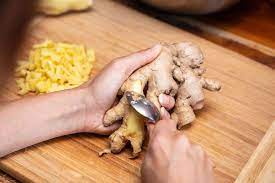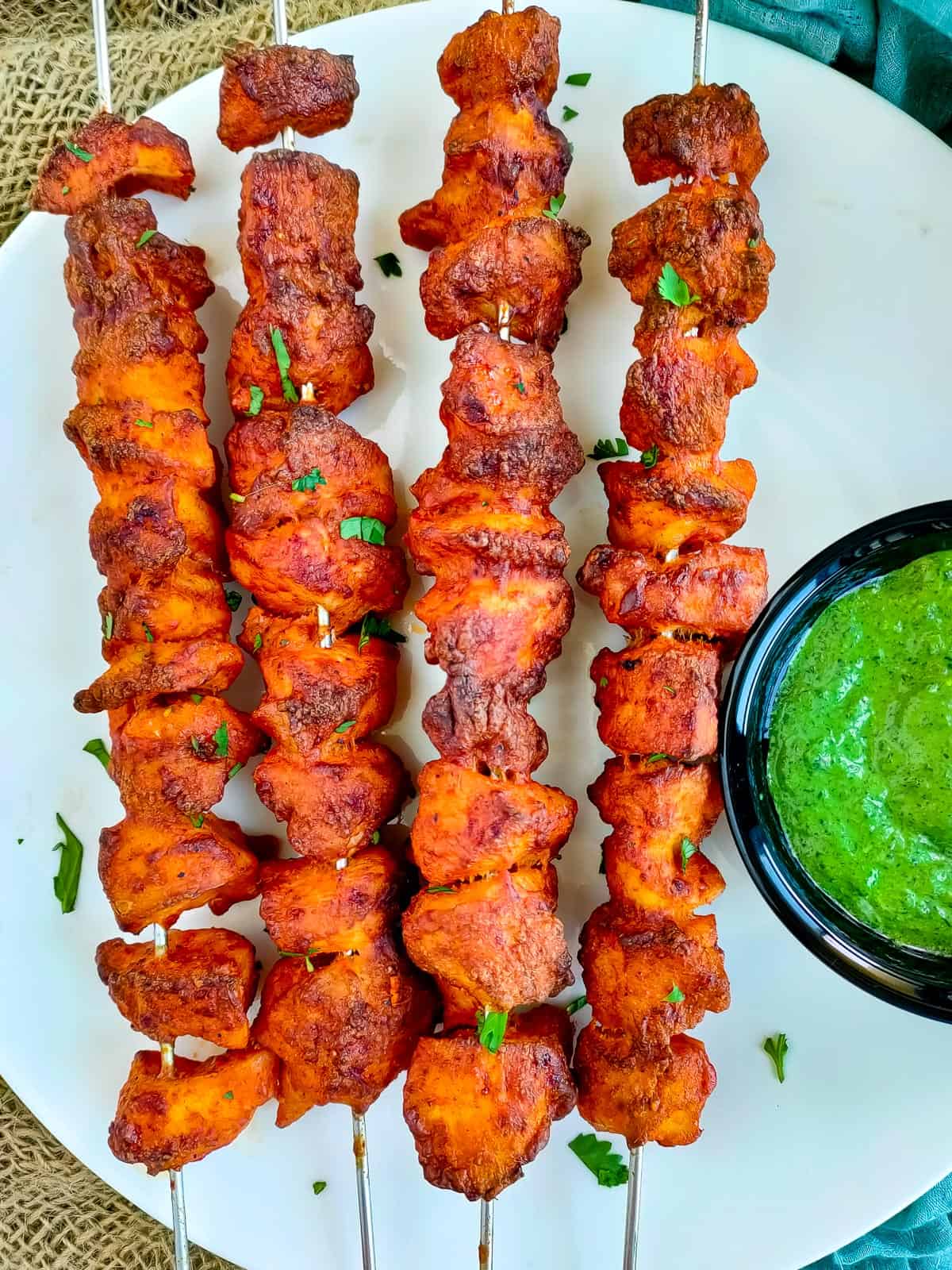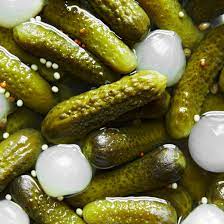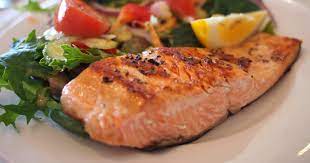Quick and Easy Techniques How to Peel Ginger Like a Pro
Ginger is a versatile and flavorful ingredient that is used in many dishes and beverages around the world. Whether you’re making ginger tea, stir-fry, or curry, it’s important to know how to properly peel ginger to unlock its full potential. Peeling ginger might seem like a daunting task, but with a few simple techniques, you can easily remove the skin and enjoy the rich, spicy flavor of this root.
One of the easiest and most effective ways to peel ginger is by using a spoon. Start by selecting a piece of ginger with smooth, firm skin. Hold the ginger in one hand and firmly grip the spoon with the other. Use the edge of the spoon to scrape away the skin, applying gentle pressure as you move the spoon along the ginger. The spoon will easily remove the thin outer layer, leaving you with perfectly peeled ginger.
If you prefer a more precise method, you can also use a vegetable peeler to peel ginger. This method works especially well if you want to peel larger pieces of ginger or if you have a lot of ginger to peel at once. Simply hold the ginger firmly in one hand and hold the vegetable peeler in the other. Glide the peeler along the ginger, taking care to remove only the skin and not too much of the flesh. This method allows for greater control and precision while peeling.
An alternative method for peeling ginger is by using a knife. This technique requires a bit more skill and caution, but it can be very effective, especially for removing stubborn or hard-to-reach spots on the ginger. Start by cutting off a small piece of ginger and lay it flat on a cutting board. Hold the handle of the knife firmly and use the blade to carefully scrape away the skin, moving it away from your body. Take your time and be careful not to cut yourself.
Whichever method you choose, the key to successfully peeling ginger is to work slowly and carefully. Take your time to ensure that you are only removing the outer skin and not wasting any of the flesh. Once you’ve mastered the art of peeling ginger, you’ll be able to enjoy its unique flavor in a wide variety of dishes, adding a hint of warmth and spice to your culinary creations.
How to Peel Ginger Easily
- Using a Spoon: One of the easiest ways to peel ginger is by using a spoon. Simply scrape the skin off by gently running the edge of the spoon against the ginger. This method helps remove the skin while preserving more of the ginger itself.
- Using a Vegetable Peeler: If you have a vegetable peeler, you can use it to peel ginger as well. Hold the ginger firmly and use the peeler to remove the skin in thin strips. This method is quick and efficient.
- Using a Knife: Another common method to peel ginger is by using a knife. Start by cutting off the ends of the ginger, then use the knife to carefully peel off the skin. This method requires a bit more precision but can be effective for larger pieces of ginger.
- Using a Microplane: If you are looking to finely grate ginger, a microplane can be a useful tool. Simply rub the ginger against the small grating holes to remove the skin and create a fine ginger paste. This method is great for adding ginger flavor to sauces, dressings, or marinades.
No matter which method you choose, always make sure to wash and scrub the ginger before peeling to remove any dirt or impurities. With these easy and effective ways to peel ginger, you can now enjoy cooking with this flavorful ingredient hassle-free!
Using a Spoon
If you don’t have a peeler or knife on hand, you can easily peel ginger using a spoon. This method is gentle and reduces waste, as you’re only removing the skin and not any of the flesh.
Start by holding the ginger firmly in one hand and using the edge of a spoon in the other hand to scrape away the skin. Apply slight pressure and work your way across the ginger, removing the skin as you go. Be sure to scrape the spoon in the opposite direction of the root’s fibers, as this will help remove the skin more effectively.
If you encounter any tough or uneven parts, use the edge of the spoon to gently remove them. Keep scraping until all the skin is removed, and then rinse the ginger under running water to remove any debris.
This method is great if you only need to peel a small amount of ginger, as it might take some time if you have a larger piece. However, it’s a simple and effective way to peel ginger without any special tools.
Freezing and Grating
Another easy and effective way to peel ginger at home is by freezing it first. Freezing the ginger helps to firm it up, making it easier to peel and grate.
To freeze ginger, start by selecting fresh and firm ginger roots. Wash the ginger thoroughly to remove any dirt or debris. Pat the ginger dry with a paper towel.
Next, peel the ginger using a peeler or the edge of a spoon. Once peeled, cut the ginger into small pieces or slices.
Place the ginger pieces or slices in a freezer-safe container or bag. Make sure to remove any excess air from the container or bag to prevent freezer burn.
Label the container or bag with the date and place it in the freezer. The ginger will typically stay fresh for up to six months when properly stored in the freezer.
To use the frozen ginger, simply take it out of the freezer and grate it while still frozen. The frozen ginger will grate easily and can be used in various dishes, such as stir-fries, soups, or marinades.
| Benefits of Freezing and Grating Ginger |
|---|
| Preserves the freshness of ginger for a longer period |
| Easy to grate while still frozen |
| Can be used in a variety of dishes |
| Eliminates the need for peeling fresh ginger each time |
Overall, freezing and grating ginger is a convenient way to have ginger readily available whenever needed. Whether you use it for its flavor or its health benefits, this method ensures that you always have ginger on hand.
Using a Vegetable Peeler
A vegetable peeler is a handy kitchen tool that can be used to peel ginger quickly and effectively. To use a vegetable peeler to peel ginger, follow these simple steps:
- Wash the ginger thoroughly to remove any dirt or debris.
- Hold the ginger firmly in one hand.
- Use the vegetable peeler to peel away the skin of the ginger. Start at one end and gently slide the peeler down the length of the ginger.
- Continue peeling until all the skin has been removed.
- Once the ginger is peeled, use a knife or grater to further process it according to your recipe.
Using a vegetable peeler is a great option for peeling ginger because it allows you to remove only the skin, preserving the flesh of the ginger. This method is quick, easy, and helps to minimize waste.
Quick Tips for Peeling Ginger
Peeling ginger can be a hassle, especially if you don’t have the right technique. Here are some quick tips to make the process easier and more efficient:
- Start by selecting fresh ginger root that is firm and has smooth skin. Avoid ginger that feels soft or has wrinkled skin.
- Use a spoon to scrape off the skin. Simply hold the spoon upside down and gently scrape the skin away from the ginger. This method is quick and prevents you from accidentally cutting too much of the ginger off.
- If the spoon method doesn’t work, you can also use a vegetable peeler. Hold the ginger firmly in one hand and use the peeler to remove the skin. Take care to peel in one smooth motion to avoid wasting any ginger.
- An alternative method is to use a knife to remove the skin. Hold the ginger firmly and carefully use a sharp knife to slowly peel off the skin. This method requires more precision and can be riskier, so take your time and be cautious.
- After peeling, rinse the ginger under cold water to remove any remaining peel or dirt. Pat dry with a paper towel before using in your recipes.
Remember, the key to peeling ginger is to use a method that is comfortable and efficient for you. With these quick tips, you’ll be able to peel ginger with ease and add its distinct flavor to your favorite dishes.
Choose Fresh Ginger
When it comes to peeling ginger, the first step is to select fresh ginger at the grocery store or market. Look for gingerroot that is firm to the touch and has smooth, unblemished skin. Avoid ginger that is wrinkled, soft, or has any signs of mold.
Additionally, choose ginger that has a strong fragrance. The aroma of fresh ginger should be spicy and pungent. If the ginger has a weak or no smell, it may not be as fresh or flavorful.
It’s also a good idea to select ginger with thin skin, as it will be easier to peel. Thick-skinned ginger can be more challenging to remove the outer layer.
By carefully choosing fresh ginger, you’ll ensure that you’re starting with the best quality ingredient for your recipes.
Use Young Ginger
When it comes to peeling ginger easily and effectively, using young ginger is the way to go. Young ginger has a thin, delicate skin that is much easier to peel compared to mature ginger. The skin of young ginger is also less fibrous, making it more pleasant to eat.
To recognize young ginger, look for ginger with a thin skin that is light pink or beige in color. The skin should be smooth and free from any wrinkles or blemishes. Young ginger also has a milder flavor compared to mature ginger, which makes it a great choice for those who prefer a less intense ginger taste.
To peel young ginger, start by rinsing it under cold water to remove any dirt or debris. Then, take a spoon and gently scrape the skin off the ginger. The thin skin should come off easily without much effort. If there are any stubborn spots, you can use a peeler or a small knife to carefully remove them.
Once the ginger is peeled, you can slice, grate, or chop it according to your recipe. Young ginger can be used in a variety of dishes, including stir-fries, soups, marinades, and desserts. Its subtle flavor adds a hint of freshness and a slightly spicy kick to any dish.
So, next time you need to peel ginger, reach for young ginger. Its easy-to-peel skin, mild flavor, and versatile nature will make your cooking experience much more enjoyable.
Store Ginger Properly
Properly storing ginger can help extend its shelf life and keep it fresh for longer periods. Here are a few tips on how to store ginger:
1. Refrigerate Fresh Ginger
One of the best ways to store fresh ginger is by refrigerating it. Place the unpeeled ginger in a resealable plastic bag, removing as much air as possible before sealing it. Store it in the vegetable drawer of your refrigerator, where it can stay fresh for up to three weeks.
2. Freeze Ginger for Long-Term Storage
If you want to store ginger for an extended period, consider freezing it. Start by peeling and grating the ginger, then place it in an airtight container or freezer bag. Label it with the date and store it in the freezer. Frozen ginger can last up to six months and can be easily grated or chopped whenever you need it.
3. Make Ginger Paste for Convenience
To make ginger paste, blend peeled ginger with a small amount of oil (such as vegetable or olive oil) until smooth. Store the paste in an airtight container in the refrigerator for up to two weeks. Ginger paste is a convenient way to add flavor to your dishes without the hassle of grating or chopping ginger every time.
By following these storage methods, you can ensure that your ginger stays fresh and flavorful, allowing you to enjoy its unique taste and health benefits for longer durations.
“FAQ:” How to peel ginger
How do you peel and cut a knob of ginger, and why is it important to clean the ginger before using it?
To peel and cut a knob of ginger, use a knife to peel the skin, then cut it into matchsticks or julienne. Cleaning the ginger is crucial to remove any impurities before use.
Can you share a method for learning how to peel ginger effectively?
Use a knife to peel ginger by scraping the skin away. Learning this technique ensures you can efficiently peel ginger without unnecessary waste.
What is the recommended way to cut ginger into matchsticks, and why should you consider the grain of the fibers?
Cut a piece of ginger root into matchsticks using a chef’s knife, paying attention to cutting across the grain of the fibers for better texture and presentation.
How do you prepare candied ginger, and what role do ginger matchsticks play in this process?
To make candied ginger, peel and slice fresh ginger into matchsticks. The ginger matchsticks contribute to the texture and flavor of the candied ginger.
When a recipe calls for grated ginger, what is a common and efficient way to grate it?
Grate ginger using a microplane grater for a fine texture suitable for various recipes. This method is quick and yields well-grated ginger.
Why is using organic ginger emphasized, and what benefits does it offer in comparison to non-organic ginger?
Using organic ginger ensures that you peel the skin without worrying about pesticide residues. It contributes to a cleaner and more natural flavor in your dishes.
How can you ensure that sliced ginger retains its freshness, and what is the recommended storage method?
Store sliced ginger tightly wrapped in plastic in the refrigerator. This method preserves the freshness of the ginger for an extended period.
What is the significance of using a metal spoon when peeling ginger, and how does it help in the process?
A metal spoon is effective for peeling ginger by scraping away the papery skin. This technique minimizes waste and prevents the ginger from shriveling during peeling.
Can you explain the process of creating ginger coins using a knife, and why is cutting downwards important?
Create ginger coins by using a paring knife to cut downwards. This technique ensures uniform size and shape of the coins for consistent cooking.
Where can you find fresh ginger, and why are Asian markets commonly recommended for sourcing ginger rhizomes?
Fresh ginger is available in Asian markets, and they are a preferred source due to the quality and variety of ginger rhizomes they offer. Check Asian markets for fresh and diverse ginger options.
What is the best way to peel ginger, and why is it important to clean the ginger before using it?
The best way to peel ginger is to use a knife and cut away the papery skin. Cleaning the ginger ensures it’s free from any impurities.
How do you cut fresh ginger into tiny cubes, and what is the significance of ensuring they are as smooth as possible?
Cut fresh ginger into tiny cubes by mincing it with a knife. Ensuring the cubes are as smooth as possible contributes to a better texture in your dishes.
Can you share a technique for cutting ginger into matchsticks, and why is it common to cut them uniformly and store them in ice-cube trays?
Cut ginger into matchsticks and store them in ice-cube trays for easy access. Uniformly cut matchsticks provide consistency in flavor, and the ice-cube trays help in portion control.
How can you extend the shelf life of ginger, and what is the recommended storage method?
Store peeled and cut ginger tightly wrapped in plastic in the refrigerator. This method ensures the ginger will last longer while maintaining its freshness.
When a recipe calls for minced ginger, what is the preferred way to achieve finely minced ginger?
Achieve finely minced ginger by using a knife to run the ginger through a mincing process. This technique results in finely chopped ginger suitable for various recipes.
What are the nutritional benefits of using fresh ginger in cooking, and why is it considered a valuable addition to many cuisines?
Fresh ginger adds a zing to many cuisines and offers nutritional benefits. It is known for its unique flavor profile and potential health-promoting properties.
How do you julienne a piece of ginger root, and what role does cutting across the grain play in this process?
To julienne ginger, use a knife to cut it into thin matchsticks across the grain of the fibers. Cutting across the grain enhances the texture of the julienned ginger.
Why is it recommended to use fresh ginger rather than processed alternatives, and what benefits does fresh ginger bring to your dishes?
Using fresh ginger provides a more vibrant flavor and aroma to your dishes compared to processed alternatives. Fresh ginger enhances the overall quality of your culinary creations.
How does a juicer come in handy when working with ginger, and what creative ways can you incorporate ginger juice into your recipes?
A juicer is useful for extracting ginger juice, which can be creatively incorporated into sauces, dressings, and beverages, adding a burst of flavor to your recipes.
What creative uses can you find for ginger peelings, and how can you repurpose them in your cooking?
Ginger peelings can be repurposed by infusing them into liquids for added flavor or by creating a ginger peel syrup. Get creative with repurposing ginger peelings to enhance the taste of your dishes.




